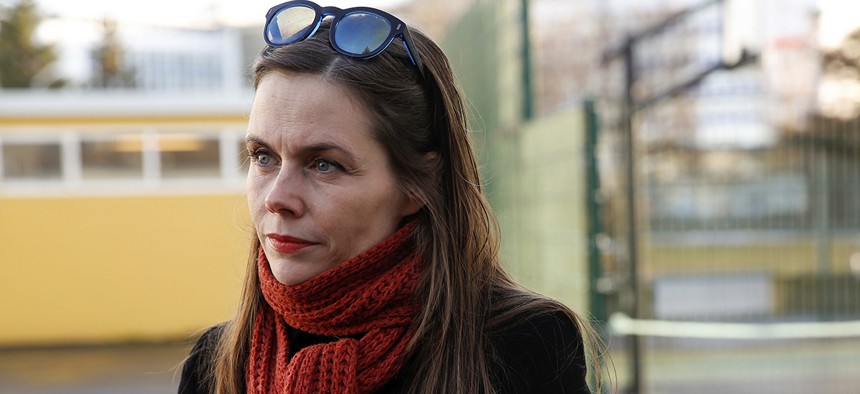Iceland Has a Simple Solution for Closing Gender Pay Gap: Make It Illegal

Katrin Jakobsdottir, who was recently elected Prime Minister of Iceland Brynjar Gunnarsson/AP
“We need to make sure that men and women enjoy equal opportunity in the workplace."
On Jan. 1, Iceland made it illegal to pay men more than women—an inequality that exists (with respect to average gross hourly and annual income) in almost every nation. This legislation made the Nordic island nation, population 334,252, the first country in the world to ban pay discrimination on the basis of gender.
The law isn’t complicated: Under it, companies and government agencies employing at least 25 people will have to obtain government certification of their equal-pay policies. Companies and agencies that fail to prove pay parity will face fines.
Dagny Osk Aradottir Pind, a board member of the Icelandic Women’s Rights Association, commented on the law to Al Jazeera: “The legislation is basically a mechanism that companies and organisations [will use to] evaluate every job that’s being done, and then they get a certification after they confirm the process if they are paying men and women equally.” The mechanism, which Pind says is explicitly designed to ensure women and men receive equal pay for equal work, represents a definitive step in Iceland’s long-standing mission to close its pay gap.
For the past nine years, Iceland has been ranked by the World Economic Forum (WEF) as the world’s most gender-equal country, as evaluated by The Global Gender Gap Report, a massive worldwide survey that evaluates a nations’ state of gender equality using measures such as economic opportunity, political empowerment, and health and survival. And, as Cassie Werber reports for Quartz, Iceland isn’t just maintaining a static lead on these metrics while everyone else stalls—it’s increased the percentage of men’s income that women earn by 10 percentage points in the last decade, from just under 80% to just under 90%.
“The head of the World Economic Forum’s gender equality campaign, which conducts the survey, thinks Iceland could be the first to close its gender gap completely,” reports Werber. In 2016, Iceland had closed 87% of their gender pay gap. For comparison, in the US the gender pay gap is about 20% on average, though the gap is significantly higher for women of color. According to Al Jazeera, the Icelandic government plans to completely eradicate the wage gap in Iceland by 2020, a goal that seems plausible given the nation’s current rate of change.
Iceland scores well on almost every front of gender parity: It has had a female president for 20 of the past 50 years, nearly 50% of its parliament members are women, and it closed its health and education gender gaps many years ago. However, according to Saadia Zahidi, head of the WEF’s gender equality campaign, the factor that most contributes to Iceland thinning gender wage gap is women’s economic participation.
“It’s obviously a very small economy and talent, human capital, is very precious,” Zahidi tells Werber. “And so I think they have taken the approach where you don’t want to be wasting any of that talent, and you want to ensure that both women and men are able to combine their family or social obligations along with their ability to work.”
All of these factors make it unsurprising that the new gender pay law faced little opposition when it was introduced in March 2017 and when it passed this week. “We need to make sure that men and women enjoy equal opportunity in the workplace,” said Equality and Social Affairs Minister Thorsteinn Viglundsson when the law was announced. “It is our responsibility to take every measure to achieve that.” That responsibility ought to be shared by every other nation, too.


